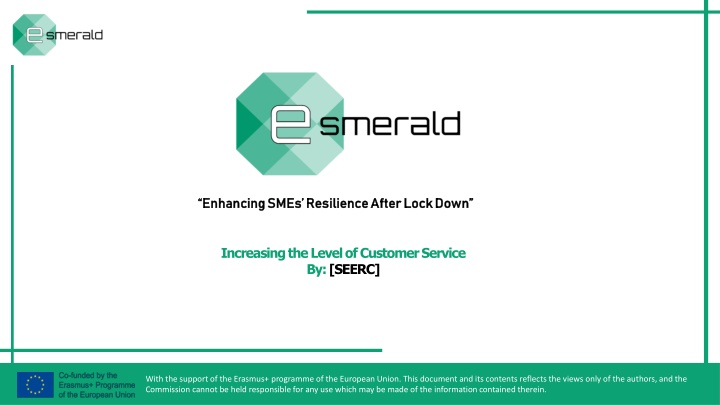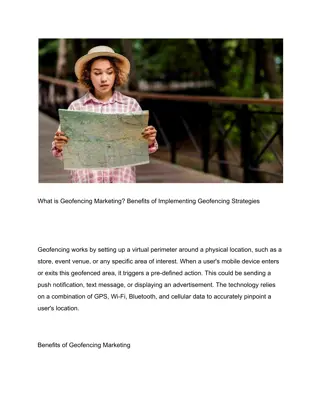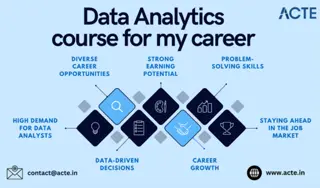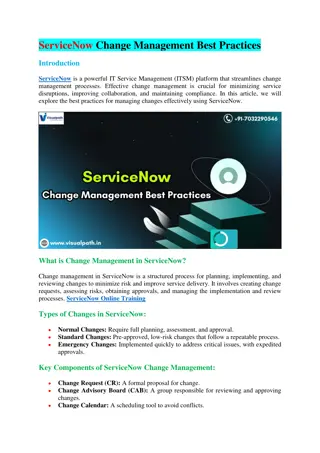
Enhancing SMEs' Resilience Through Customer Service Focus
Learn how to understand customer needs, differentiate types of customer requirements, and improve customer service to enhance SME resilience after lockdown. Explore the fundamental aspects of customer service and its importance in building strong customer relationships.
Download Presentation

Please find below an Image/Link to download the presentation.
The content on the website is provided AS IS for your information and personal use only. It may not be sold, licensed, or shared on other websites without obtaining consent from the author. If you encounter any issues during the download, it is possible that the publisher has removed the file from their server.
You are allowed to download the files provided on this website for personal or commercial use, subject to the condition that they are used lawfully. All files are the property of their respective owners.
The content on the website is provided AS IS for your information and personal use only. It may not be sold, licensed, or shared on other websites without obtaining consent from the author.
E N D
Presentation Transcript
Enhancing SMEs Resilience After Lock Down Enhancing SMEs Resilience After Lock Down Increasingthe Level of Customer Service By: [SEERC] With the support of the Erasmus+ programme of the European Union. This document and its contents reflects the views only of the authors, and the Commission cannot be held responsible for any use which may be made of the information contained therein.
OBJECTIVES AND GOALS OBJECTIVES AND GOALS At the end of this module you will be able to: Objective 1: Understand customer needs Objective 2: Focus on the customer s requirements Objective 3: Identify what is enough customer service Objective 4: Separate digital versus non-digital customer service With the support of the Erasmus+ programme of the European Union. This document and its contents reflects the views only of the authors, and the Commission cannot be held responsible for any use which may be made of the information contained therein.
UNIT 2: UNIT 2: Understand customer needs Understand customer needs SECTION 2.1.1: Defining customer needs A customer need can either be a known (can articulate what they want) or unknown (cannot articulate what they want) need which motivates purchasing of a product or service. Ask: What job does my product or service do for my customers and/or potential customers ? Does it help make their: - lives: Easier? Healthier? More fulfilled? etc. - organizations: More effective? Save costs? Save time? etc. https://online.hbs.edu/blog/post/types-of-customer-needs# With the support of the Erasmus+ programme of the European Union. This document and its contents reflects the views only of the authors, and the Commission cannot be held responsible for any use which may be made of the information contained therein.
UNIT 2: UNIT 2: Understand customer needs Understand customer needs SECTION 2.1.2: Types of customer needs Generally there are three key types of customer needs: Functional; Social; Emotional Functional: tangible needs that help fill a specific task or function that needs to be completed Social: how one may be perceived by others impacted by culture (country, organizational, peer-groups) Emotional: how one wishes to feel https://online.hbs.edu/blog/post/types-of-customer-needs# With the support of the Erasmus+ programme of the European Union. This document and its contents reflects the views only of the authors, and the Commission cannot be held responsible for any use which may be made of the information contained therein.
UNIT 2.2: UNIT 2.2: Focus on the customer s requirements Focus on the customer s requirements SECTION 2.2.1: What does service really mean? Customer service at its fundamental level is a process of relationship building with current and future customers It starts when someone first knows about you and ends when they forget about you! Business owners understand that loyal customers lead to higher levels of repeat business and positive word-of- mouth (including through social media); service is critical in this What service means by Simon Sinek The SERVICE in Customer Service : https://www.youtube.com/watch?v=Em7NPWmyw6w&t=57s With the support of the Erasmus+ programme of the European Union. This document and its contents reflects the views only of the authors, and the Commission cannot be held responsible for any use which may be made of the information contained therein.
UNIT 2.2: UNIT 2.2: Focus on the customer s requirements Focus on the customer s requirements SECTION 2.2.2: What are customers looking for? Below we have summarized what consultants and writers have suggested as various requirements from customer service in the post-pandemic world: - - - - Empathy Politeness Transparency Availability - - - - Control Options Convenience Active listening - - - Accessibility Information Fairness What we have now is a movement towards ultimate flexibility in terms of how, when, and where customer service can take place. Digitalization is critical to this process but also having to build in the human element as required. With the support of the Erasmus+ programme of the European Union. This document and its contents reflects the views only of the authors, and the Commission cannot be held responsible for any use which may be made of the information contained therein.
UNIT 2.3: UNIT 2.3: Identify what is enough customer service Identify what is enough customer service SECTION 2.3.1: Fundamentals of customer service You need to start by asking: What are the expectations of our customers pre-purchase versus post-purchase and how well do we meet those expectations? The service offered MUST match that promised. The levels of customer service vary depending on the customer. Organizations may: - charge an additional fee for various levels of pre or post-purchase customer service (basic, premium) or - increase their levels of pre- or post- customer service depending on the value of a customer (e.g., airlines have service tiers for their clients which open up services to them depending on how a customer flies) https://www.business.qld.gov.au/running-business/consumer-laws/customer-service/improving/principles With the support of the Erasmus+ programme of the European Union. This document and its contents reflects the views only of the authors, and the Commission cannot be held responsible for any use which may be made of the information contained therein.
UNIT 2.3: UNIT 2.3: Identify what is enough customer service Identify what is enough customer service SECTION 2.3.2: Identifying when you have enough customer service Customer service is fluid and changes from customer to customer; some require minimal service while others can never be satisfied. There are, however, three low-cost ways of identifying if you have enough good customer service: - Ask your customers!! This also helps develop your relationship with them and shows you care about their input and want to do better - Ask your own employees!! Many times your own people can help identify gaps in what you provide. They are interfacing daily with your customers and know where possible problems lay - Benchmark the services you offer against your key competitors!! We sometimes forget that we need to be continually watching what intangibles competitors offer. We can also ask our customers and employee to gain insight here. How to Improve Your Customer Service: https://www.youtube.com/watch?v=qXQYNxDdbh8&t=8s With the support of the Erasmus+ programme of the European Union. This document and its contents reflects the views only of the authors, and the Commission cannot be held responsible for any use which may be made of the information contained therein.
UNIT 2.4: UNIT 2.4: Separate digital vs. non Separate digital vs. non- -digital customer service SECTION 2.4.1.: Digital versus non-digital digital customer service While digital channels of customer service have become somewhat ubiquitous throughout the pandemic, organizations cannot forget about the non-digital component and the importance of the interaction between the two, especially as we move to a post-pandemic world It is important to seamlessly integrate digital and non-digital multiple channel customer service - Phone - email - Website - SMS / Text - - social media in-person / on-site support https://www.the-future-of-commerce.com/2021/08/02/what-is-customer-service-definition-examples/ N.B.: Some components of customer service can also be outsourced to trusted suppliers of that service (e.g., delivery services now represent restaurants when they deliver their products to customers); they need to be strategically developed but seamlessly connected to ensure consistency. With the support of the Erasmus+ programme of the European Union. This document and its contents reflects the views only of the authors, and the Commission cannot be held responsible for any use which may be made of the information contained therein.
UNIT 1.4: UNIT 1.4: Separate digital vs. non Separate digital vs. non- -digital customer service SECTION 2.4.2.: Future oriented customer service digital customer service The customer service trends appear to be revolving around two dichotomous, yet connected, areas: - Personalization: Customers need to feel important and that the company knows them and not just a customer this can be done through both non-digital but also digital means Artificial Intelligence (AI): Is changing the fundamentals of customer service interactions making the process simpler for routine tasks and leading to higher levels personalization as it evolves. - https://www.techtarget.com/searchcustomerexperience/feature/10-examples-of-AI-in-customer-service# With the support of the Erasmus+ programme of the European Union. This document and its contents reflects the views only of the authors, and the Commission cannot be held responsible for any use which may be made of the information contained therein.
Summing Up Summing Up Requirements Digitalization Embrace but do not Define their service forget the importance expectations of non-digital Future Levels required Needs The level of customer Building both digital and non-digital customer service systems service needs to meet Get to know your what has been customer needs promised With the support of the Erasmus+ programme of the European Union. This document and its contents reflects the views only of the authors, and the Commission cannot be held responsible for any use which may be made of the information contained therein.
SWOT Analysis SWOT Analysis SELF-EVALUATION W S T O Strengths: - - Weaknesses: - - Opportunities: - - Threats: - - With the support of the Erasmus+ programme of the European Union. This document and its contents reflects the views only of the authors, and the Commission cannot be held responsible for any use which may be made of the information contained therein.
Key takeaways: Key takeaways: Takeaway 1: Keep customer needs front and centre in all decisions related to customer service (functional, social, emotional) Takeaway 2: Customer requirements are fluid and need to be continually monitored and re-evaluated. Takeaway 3: The levels of customer service provided need to match what has been promised and what is expected Takeaway 4: Focus on digital customer service (the future) BUT do not forget about non- digital interactions With the support of the Erasmus+ programme of the European Union. This document and its contents reflects the views only of the authors, and the Commission cannot be held responsible for any use which may be made of the information contained therein.
Thank-you! With the support of the Erasmus+ programme of the European Union. This document and its contents reflects the views only of the authors, and the Commission cannot be held responsible for any use which may be made of the information contained therein.





